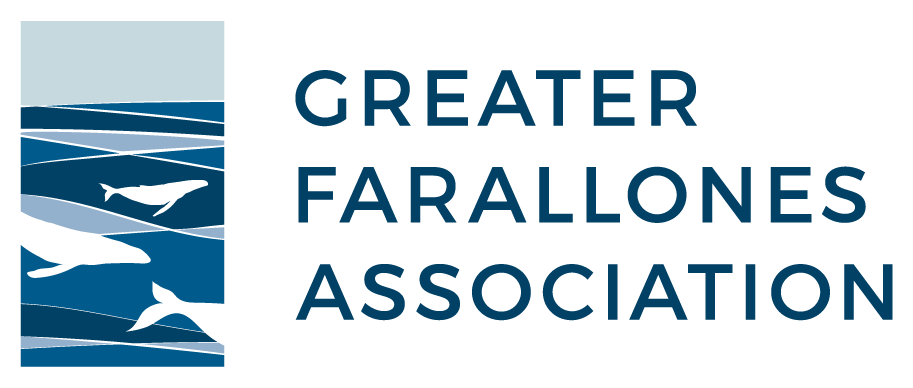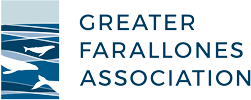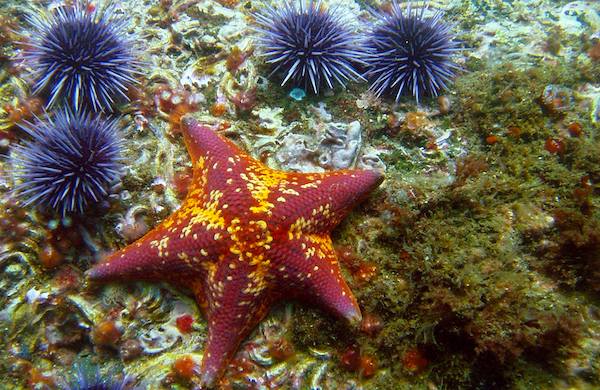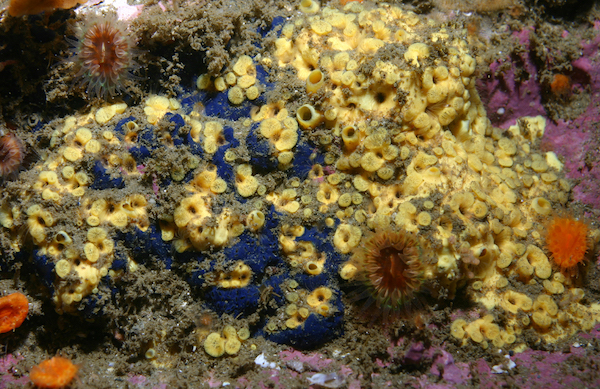
Mollusks
Mollusks are a type of invertebrate species. It is a broad branch name for soft-bodied creatures, many of whom have shells! Some of the most common mollusks in Greater Farallones National Marine Sanctuary include snails, nudibranchs, squid, and octopus.
Photo: Opalescent Aeolid nudibranch (Hermissenda opalescens); Credit: Steve Lonhart, NOAA






